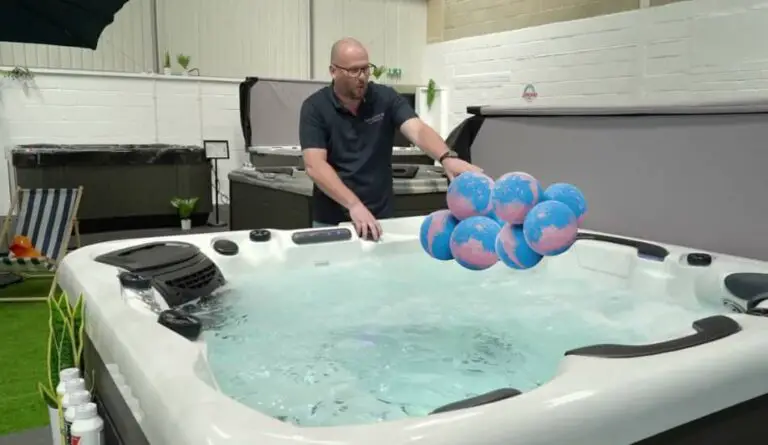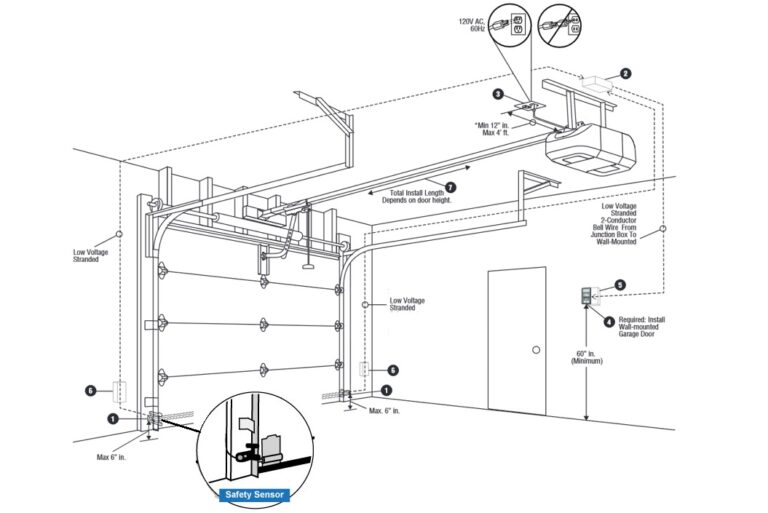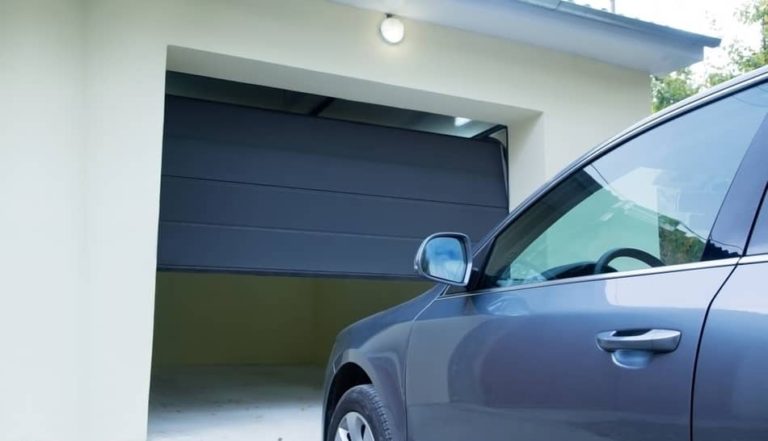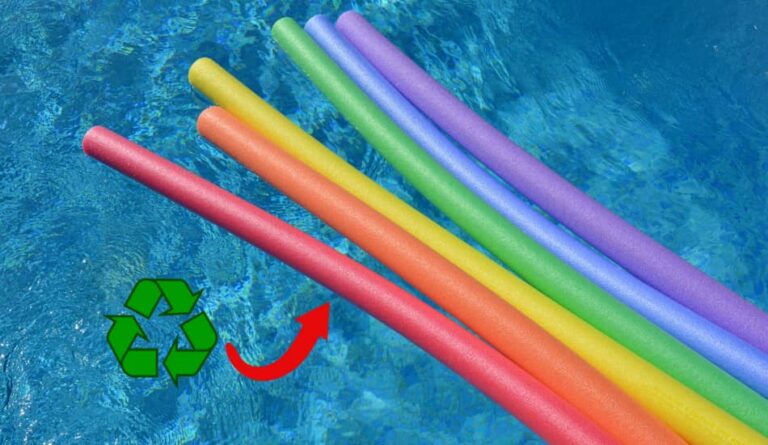What Is the Right Temperature For a Hot Tub?
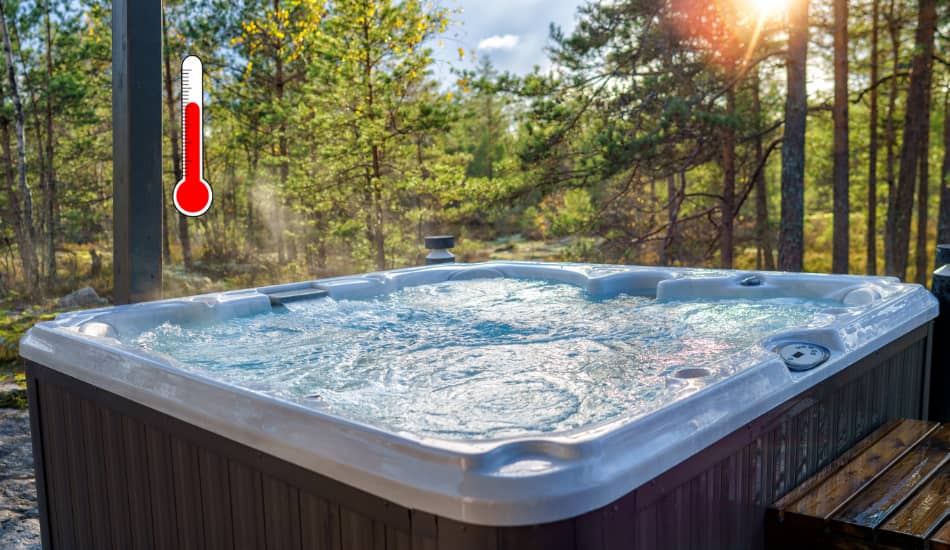
If you want to know what is the right temperature for a hot tub, you come to the right place. Even though 104 °F (40 °C) is generally considered the highest recommended temperature for a hot tub, there isn’t the “right” or “wrong” setting below this. Instead, it’s about choosing the temperature that offers you maximum comfort. In this article, we’ll talk about what is the right temperature for a hot tub. So, let’s start!
What is the Right Temperature For a Hot Tub? The ideal temperature for a hot tub depends on personal comfort, but many hot tub users prefer the range between 100°F-102°F, as organizations like BISHTA recommend. Finding a temperature that feels relaxing yet safe for you is essential. During hotter days, a cooler setting might feel just perfect!
When you’ve determined the temperature that’s just right for you, you can truly enjoy the benefits of warm water, such as alleviating muscle aches or aiding sleep in a hot tub. In the next section, we’ll cover the comfortable hot tub temperature and everything related to this topic.
Water Temperature Quick Facts
- Most individuals enjoy their hot tub experience between 100°F and 102°F.
- The recommended maximum temperature is 104°F, a temperature choice for some.
- If you’re pregnant, it’s important to consult with a doctor before entering a hot tub.
- Kids below 5 years old shouldn’t stay in hot tubs with water hotter than 95°F and should limit their time to 5-10 minutes per session.
Related Article: How Do I Make My Hot Tub Private? 9 DIY Ways
Table of Contents
Finding The Ideal Hot Tub Temperature
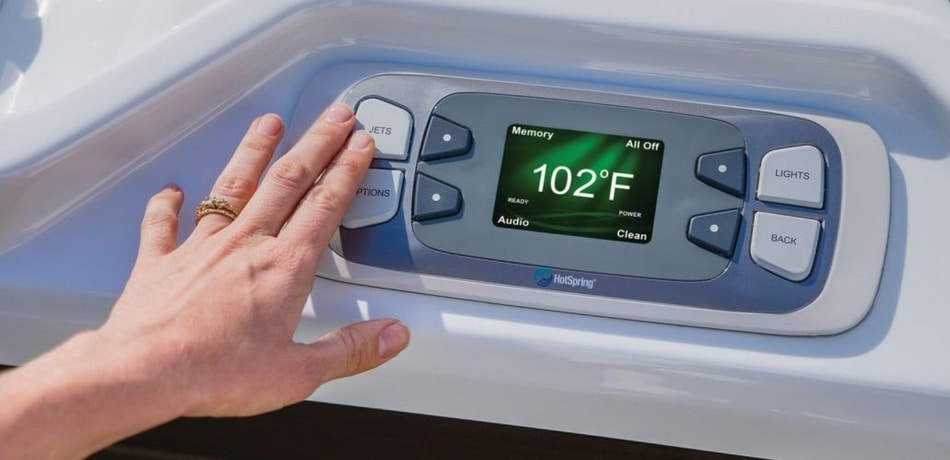
Finding the right temperature for your hot tub is very important to the overall experience. If you have never used a hot tub before, it’s a good idea to try different temperatures and see which one suits you the most. Once you find a temperature that suits you the most, try to stick to it because constantly changing the heat might increase the electricity costs and wear on the tub.
The US Consumer Product Safety Commission suggests that the ideal hot tub water temperature ranges from 100°F to 102°F (37.7 °C to 38.8 °C). The best temperature is really up to what feels right for you.
A helpful starting point is the average human body temperature, which is around 37°C (98.6°F) . Many hot tubs are set at 38°C (100°F), a comfortable starting point for most people. This allows some room for the water’s temperature to decrease, which is normal when people step in.
The highest safe temperature limit for hot tubs is 40°C (104°F), as BISHTA (The British and Irish Spa and Hot Tub Association) noted. They warn that staying in water hotter than 40°C (104°F) can be risky and might lead to health problems.
However, if you need to cool down, many hot tubs can be adjusted to temperatures as cool as 26°C, making it perfect for a refreshing dip on a warm summer day.
Related Article: Can Hot Tub Be Cold? Explained
What is the Maximum Temperature For a Hot Tub?
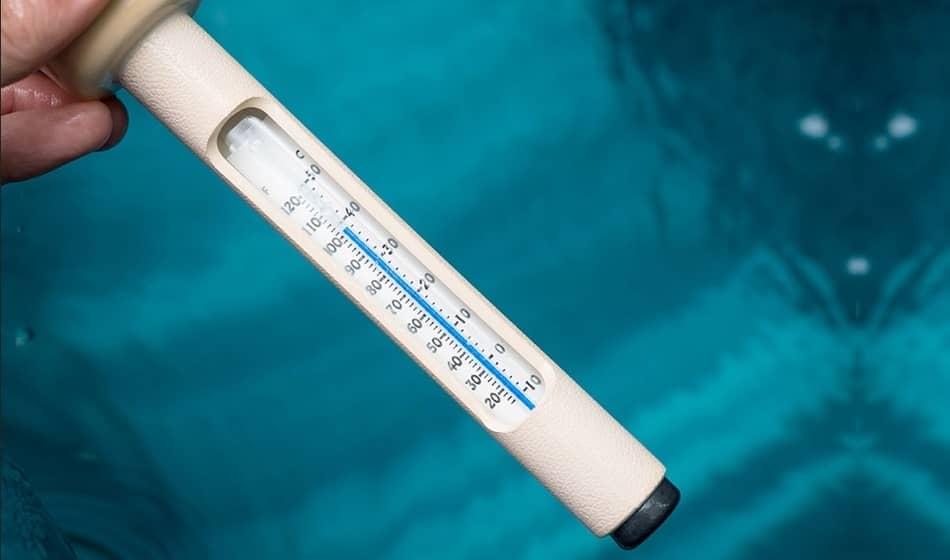
The recommended maximum temperature for a hot tub is 40 degrees Celsius (104°F). While hot tubs are designed for relaxation and enjoyment, keeping safety in mind is essential. Exceeding this temperature can pose health risks. Therefore, always ensure the water temperature remains at or below this limit for a safe and comfortable experience.
Safe Temperatures While Pregnant
The NHS recommends that pregnant individuals avoid hot tubs because of the higher chances of getting too hot, dehydrating, or feeling dizzy. Spending only 10 minutes in hot water might cause your body temperature to go above 38°C (100°F), which isn’t good for you or your baby. If you’re ever in doubt, it’s best to talk to your doctor.
Safe Temperatures For Kids
Hot tubs aren’t recommended for kids under the age of 5. For children older than 5, a cooler setting around 35°C (95°F) is recommended since they can’t adjust their body heat as well as adults can. Whenever kids are in a hot tub, an adult should watch them to ensure their safety, and it’s essential to give them enough water to drink so they remain well-hydrated.
How Long Does a Hot Tub Take to Heat Up?
Several factors play a role when we talk about the time needed to heat up the hot tub, including the initial water temperature, the efficiency of your tub, and how well it’s installed. Generally, hot tubs heat up by about 3 to 6 degrees every hour, so reaching the desired temperature can take 4 to 20 hours.
The outside temperature can also affect the heating speed; the hotter it is, the faster your tub will warm. One of the benefits of hot tubs is that they keep their warmth. This means once it’s heated, you won’t need to wait again unless you’re setting it up for the first time or have just added new water.
If you want to learn more about this topic, be sure to watch this YouTube video:
Related Article: Can You Put an Inflatable Hot Tub In a Basement?
FAQ: People Also Ask
Is 40 Degrees too hot for a hot tub?
The British and Irish Spa and Hot Tub Association (BISHTA) has set a guideline that the peak safe temperature for a hot tub should not exceed 40°C or 104°F. Temperatures beyond this limit are viewed as potential health risks.
Is 30 degrees good for a hot tub?
Yes, 30 degrees is good for a hot tub. While the peak temperature recommended by BISHTA (The British and Irish Spa and Hot Tub Association) is 40°C due to potential health concerns, hot tubs can be adjusted to temperatures as low as 26°C. A setting of 30°C can be refreshing, especially during warmer days.
Final Thoughts
When we talk about the ideal temperature for a hot tub, it’s crucial to remember that while many individuals find comfort between 100°F and 102°F, the upper safety limit is set at 40°C (104°F). Personal preference plays a significant role, with some using their body’s average temperature of 37°C as a starting point.
However, safety should always be the top priority, especially for specific groups like pregnant individuals. If ever in doubt, consulting with professionals or referring to guidelines from associations like BISHTA can offer clarity. I hope this article has helped you, and if you have any questions, feel free to comment below.



